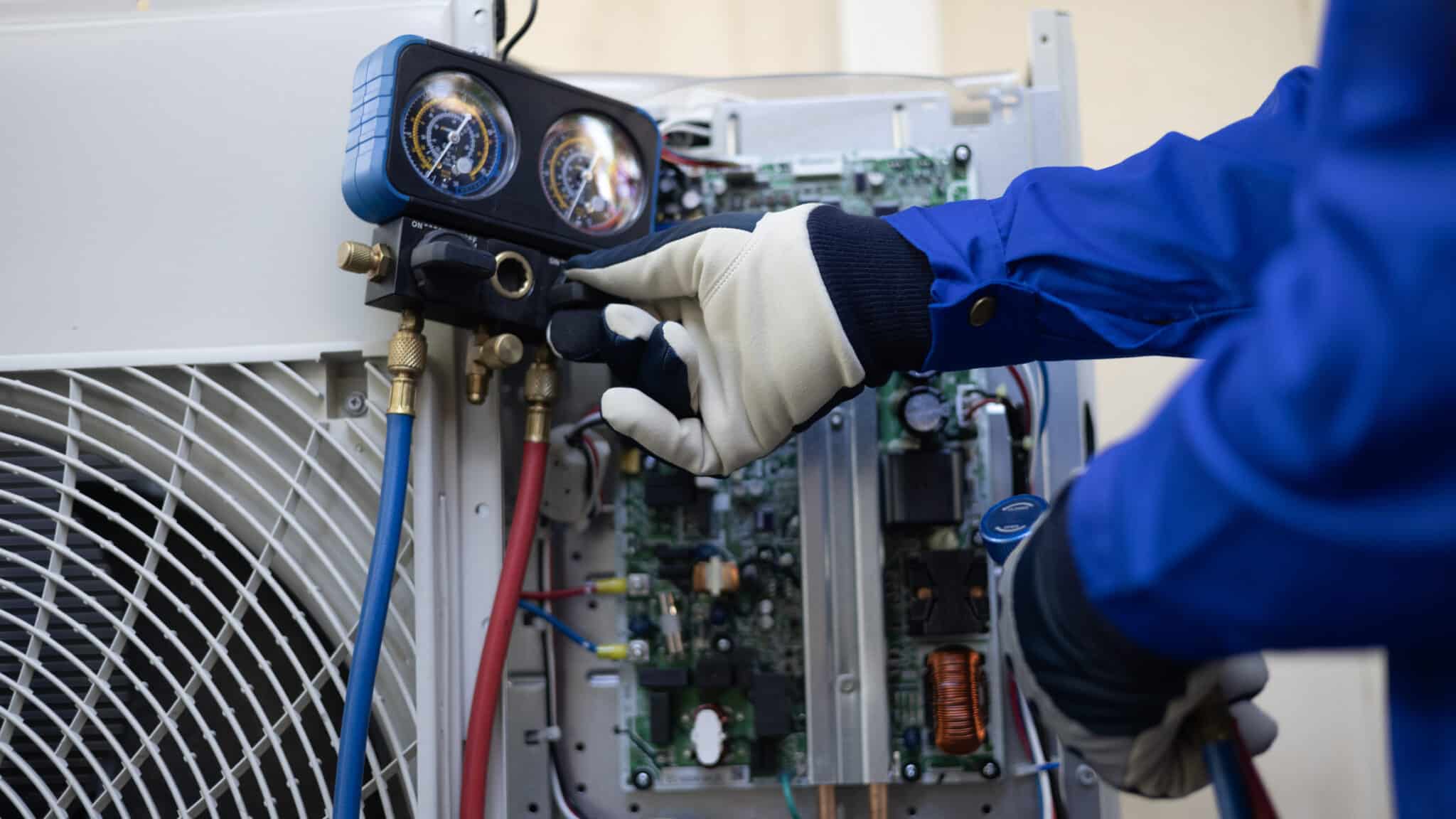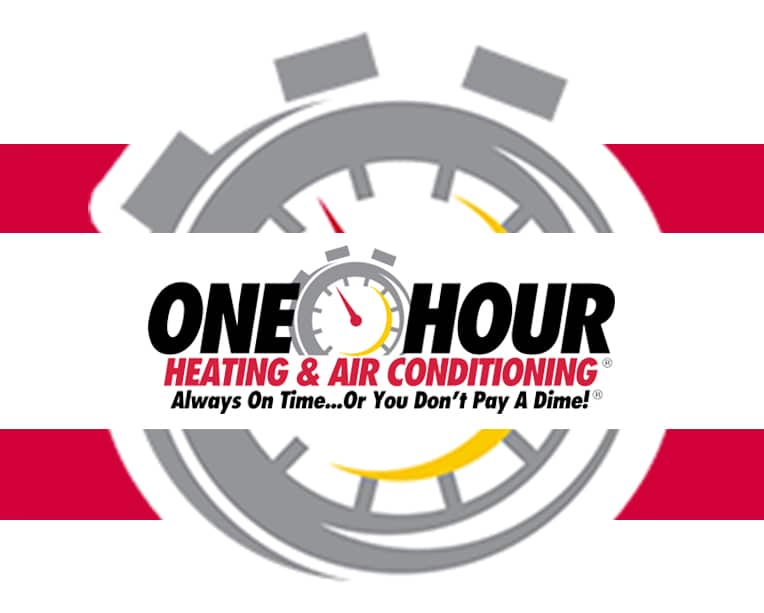Keeping up with HVAC maintenance is one of the most effective ways to lower energy costs and keep your home comfortable year-round. In 2025, with rising energy prices and increasing environmental concerns, maintaining an efficient heating and cooling system is more important than ever. A well-maintained HVAC system not only reduces energy waste but also extends the lifespan of your unit, helping you avoid costly repairs or replacements.
For homeowners in La Mesa, CA, seasonal temperature changes put added stress on HVAC systems. Summers bring high temperatures that force air conditioners to work harder, while cooler winter nights require heating systems to run efficiently. Without proper maintenance, your system may struggle to keep up, leading to increased energy consumption and higher utility bills.
Routine HVAC maintenance ensures that your system operates at peak performance. Tasks like changing air filters, cleaning ductwork, and checking for refrigerant leaks can make a significant difference in energy efficiency. Additionally, professional maintenance services can identify minor issues before they turn into major problems, saving you money in the long run.
In this guide, we’ll walk you through everything you need to know about HVAC maintenance in 2025. From essential maintenance tasks to the benefits of smart thermostats, this comprehensive resource will help you optimize your HVAC system for maximum energy savings.
How Regular HVAC Maintenance Saves Energy
Many homeowners overlook HVAC maintenance, but neglecting it can lead to higher energy bills and reduced system efficiency. When an HVAC system isn’t properly maintained, dust, dirt, and debris accumulate in key components like the air filters, coils, and ductwork. This buildup forces the system to work harder to push air through, consuming more energy in the process. Over time, the extra strain on the system leads to unnecessary costs and increases wear and tear, shortening the unit’s lifespan.
A well-maintained HVAC system operates more efficiently because its components are clean and functioning correctly. Regular maintenance tasks, such as cleaning evaporator and condenser coils, replacing clogged air filters, and checking for refrigerant leaks, help prevent energy loss. Studies show that simple maintenance can improve an HVAC system’s efficiency by up to 15%, directly reducing monthly utility bills. For homeowners trying to manage energy costs, routine servicing is one of the easiest and most effective ways to save money over time.
Another key factor in energy savings is airflow. Blocked vents, dirty filters, or clogged ductwork restrict airflow, making it harder for the system to distribute air evenly throughout your home. When airflow is restricted, the system must work longer to reach the desired temperature, which increases energy consumption. This imbalance often causes some rooms to feel too hot or too cold, leading homeowners to adjust the thermostat more frequently, another cause of excessive energy use.
Routine HVAC maintenance also ensures that all mechanical components function properly. Worn-out belts, malfunctioning thermostats, or loose electrical connections can reduce efficiency and lead to energy waste. A professional inspection can catch these minor issues early, preventing small inefficiencies from turning into major, costly repairs.

Essential HVAC Maintenance Tasks for 2025
Keeping your HVAC maintenance routine up to date is one of the best ways to improve energy efficiency and extend the life of your system. In 2025, with rising energy costs and increasing environmental concerns, homeowners need to prioritize maintenance to keep their systems running at peak performance. Here are the most essential HVAC maintenance tasks every homeowner should follow.
1. Clean or Replace Air Filters Regularly
Air filters play a crucial role in keeping your HVAC system running efficiently. When filters become clogged with dust, pet dander, and other debris, airflow is restricted, forcing the system to work harder. This leads to higher energy consumption and can even cause overheating. Experts recommend changing standard filters every 1-3 months, depending on usage and household conditions. In areas like La Mesa, CA, where dust and pollen levels fluctuate, homeowners may need to replace filters more frequently.
2. Inspect and Seal Ductwork
Leaky ducts can lead to significant energy losses, as conditioned air escapes before reaching its intended destination. Studies show that poorly sealed ductwork can result in up to 30% energy waste. Checking for gaps, cracks, or loose connections in your duct system and sealing them with professional-grade materials can improve airflow and system efficiency. A well-maintained duct system ensures even temperature distribution, reducing the need for constant thermostat adjustments.
3. Check and Calibrate Your Thermostat
An improperly calibrated thermostat can lead to unnecessary energy use. If your thermostat is reading temperatures incorrectly, your HVAC system may be running longer than needed. Testing and recalibrating your thermostat at least once a year helps maintain accurate temperature control. Upgrading to a smart thermostat can further improve efficiency by automatically adjusting settings based on your schedule and preferences.
4. Clean Condenser and Evaporator Coils
Dirt and grime buildup on the evaporator and condenser coils can reduce your system’s ability to absorb and release heat efficiently. When coils are dirty, the system has to work harder to cool or heat your home, leading to increased energy usage. Cleaning these coils at least once a year helps maintain optimal performance. Outdoor condenser units, especially in places like La Mesa, CA, should be checked regularly, as debris from nearby trees or landscaping can accumulate quickly.
5. Schedule Professional HVAC Tune-Ups
While DIY maintenance tasks like filter replacements and basic cleaning are helpful, professional tune-ups ensure your system operates at maximum efficiency. A certified technician can inspect electrical components, lubricate moving parts, check refrigerant levels, and identify potential issues before they become costly problems. Scheduling HVAC maintenance at least twice a year, before summer and winter, helps keep your system running smoothly and extends its lifespan.
By following these essential HVAC maintenance tasks, homeowners can reduce energy consumption, improve indoor air quality, and prevent costly breakdowns. Regular upkeep ensures that your HVAC system operates efficiently, providing reliable comfort throughout the year.
Seasonal HVAC Maintenance Checklist
Each season brings unique challenges for your HVAC system. Preparing your heating and cooling system for changing weather conditions ensures it operates efficiently year-round. A well-planned HVAC maintenance schedule can prevent unexpected breakdowns, improve energy efficiency, and extend the life of your system. Homeowners in La Mesa, CA, can benefit from following a seasonal approach to maintenance to keep their systems running smoothly.
During the spring and summer months, air conditioning systems work harder to maintain comfortable indoor temperatures. Replacing air filters regularly improves airflow and prevents the system from overworking. Cleaning condenser coils is essential, as dust and debris buildup forces the air conditioner to use more energy. Checking refrigerant levels ensures that the system cools efficiently without straining the compressor. Inspecting ductwork for leaks and sealing any gaps prevents cooled air from escaping, helping to lower energy costs. Testing the thermostat for accurate temperature readings ensures the system maintains the desired comfort level. Clearing debris around outdoor units improves airflow and prevents overheating, which can cause unnecessary strain on the system.
As temperatures drop in the fall and winter, heating systems need to be prepared for increased usage. Inspecting and cleaning furnace burners prevents dust buildup, which can reduce heating efficiency and create potential safety hazards. Just as in the warmer months, replacing air filters is necessary to maintain proper airflow. Checking carbon monoxide detectors ensures safety, especially for homes with gas furnaces. Lubricating moving parts, such as motors and fans, reduces friction and improves system efficiency. Testing the heating system before winter allows homeowners to identify any issues before cold weather arrives. Scheduling a professional tune-up in advance ensures that all components function properly and that any potential issues are addressed before they cause breakdowns.
Common HVAC Issues That Increase Energy Use
Even with routine HVAC maintenance, certain issues can cause your system to use more energy than necessary. Many of these problems develop gradually, leading to higher utility bills and reduced efficiency. Identifying and addressing them early can help homeowners in La Mesa, CA, keep their systems running efficiently and avoid costly repairs.
One of the most common issues is clogged air filters. When filters become dirty, airflow is restricted, forcing the system to work harder to circulate air. This added strain increases energy consumption and can lead to overheating or freezing of the evaporator coil. Replacing air filters regularly is one of the simplest ways to prevent unnecessary energy use.
Refrigerant leaks are another common problem that affects efficiency. When refrigerant levels are low, the system struggles to cool the air properly, causing it to run longer cycles. This extended operation increases energy usage and can lead to compressor failure if left unaddressed. A professional technician can detect and repair leaks to restore optimal cooling performance.
Blocked or leaky ductwork can also contribute to high energy bills. When air escapes through gaps or holes in the ducts, the system must compensate by running longer to maintain the desired temperature. Poorly sealed ductwork can waste up to 30 percent of conditioned air, making regular inspections and sealing essential for efficiency.
Malfunctioning thermostats can also lead to excessive energy use. If the thermostat is not accurately reading the indoor temperature, it may cause the HVAC system to turn on and off more frequently than necessary. Calibrating or upgrading to a smart thermostat can help maintain consistent temperatures and reduce energy waste.
By addressing these common HVAC issues, homeowners can improve energy efficiency and reduce their monthly utility costs. Regular maintenance and timely repairs keep systems running smoothly, ensuring reliable performance year-round.
The Role of Smart Thermostats in Energy Savings
Smart thermostats have become an essential tool for homeowners looking to improve HVAC maintenance and reduce energy costs. Unlike traditional thermostats, smart models automatically adjust temperature settings based on daily routines and preferences. This automation prevents unnecessary heating or cooling, leading to lower energy consumption and more consistent indoor comfort.
One of the main advantages of a smart thermostat is its ability to learn household habits. Over time, it creates an optimized heating and cooling schedule that aligns with when people are home or away. For example, if the house is empty during work hours, the thermostat can lower heating or cooling output and restore comfortable temperatures before residents return. This eliminates wasted energy while ensuring the home remains comfortable.
Many smart thermostats also feature remote access through smartphone apps. Homeowners in La Mesa, CA, can adjust their thermostat settings from anywhere, whether they are at work or on vacation. If an unexpected weather change occurs, users can modify their settings in real time to prevent excessive energy use. Some models even provide energy usage reports, helping homeowners track their consumption and identify ways to improve efficiency.
Indoor Air Quality and HVAC Efficiency
Indoor air quality plays a significant role in HVAC maintenance and overall system efficiency. Poor air quality can lead to clogged filters, reduced airflow, and an overworked system, all of which increase energy consumption. Homeowners in La Mesa, CA, should take steps to maintain clean indoor air to improve HVAC performance and create a healthier living environment.
One of the biggest factors affecting indoor air quality is dust and debris buildup. When airborne particles accumulate in ductwork and filters, airflow becomes restricted, forcing the HVAC system to work harder to circulate air. Regularly replacing air filters and scheduling duct cleaning can help prevent these obstructions and improve energy efficiency.
Humidity levels also affect HVAC performance. Excess moisture in the air can make cooling systems work harder, leading to increased energy use. On the other hand, dry indoor air can cause discomfort and strain heating systems. Using a dehumidifier in the summer and a humidifier in the winter can help maintain ideal humidity levels and reduce unnecessary strain on the HVAC system.
Proper ventilation is another key component of indoor air quality and energy efficiency. Without adequate ventilation, contaminants such as dust, pollen, and pet dander remain trapped indoors, affecting air quality and HVAC efficiency. Installing energy recovery ventilators (ERVs) or heat recovery ventilators (HRVs) can help improve airflow while minimizing energy loss.
By maintaining clean air filters, regulating humidity, and improving ventilation, homeowners can enhance both indoor air quality and HVAC efficiency. A well-maintained system not only consumes less energy but also provides a healthier and more comfortable indoor environment.
The Benefits of Professional HVAC Maintenance
While homeowners can handle basic HVAC maintenance tasks like changing air filters, professional servicing is essential for keeping a system in peak condition. A certified technician can detect issues early, improve system efficiency, and extend the lifespan of heating and cooling equipment. Regular professional maintenance also helps prevent unexpected breakdowns, saving homeowners from costly emergency repairs.
One of the main benefits of professional HVAC maintenance is improved energy efficiency. Technicians perform a thorough inspection, checking for dirty coils, clogged ducts, refrigerant leaks, and other issues that reduce efficiency. They also calibrate the thermostat, lubricate moving parts, and test electrical connections to ensure the system operates at optimal performance. These adjustments help reduce energy consumption and lower utility bills.
Professional servicing also enhances indoor air quality. Over time, dust, pollen, and other allergens accumulate in ductwork and system components. A technician cleans these areas, preventing contaminants from circulating throughout the home. This is especially important for homeowners in La Mesa, CA, where seasonal changes can bring increased pollen and dust levels.
Routine maintenance extends the lifespan of HVAC equipment by reducing wear and tear. A neglected system works harder to heat or cool a home, leading to premature failures and expensive replacements. Scheduling professional tune-ups at least twice a year helps keep the system running efficiently for years to come.
Investing in professional HVAC maintenance provides long-term savings by reducing repair costs, improving efficiency, and preventing major system failures. Regular inspections and servicing ensure reliable performance, keeping homes comfortable in every season.

FAQ – Common Questions About HVAC Maintenance
How often should I schedule HVAC maintenance?
Most HVAC systems require professional maintenance at least twice a year, once in the spring before the cooling season and again in the fall before heating season begins. Regular tune-ups help identify potential issues early, improve efficiency, and extend the lifespan of your system.
What are the top signs my HVAC system needs servicing?
If you notice weak airflow, inconsistent temperatures, strange noises, or an unexpected increase in energy bills, your HVAC system may need servicing. Other warning signs include frequent cycling, unusual odors, or excess humidity levels indoors. Addressing these issues early can prevent costly repairs.
Can HVAC maintenance really lower my energy bills?
Yes, routine HVAC maintenance improves system efficiency, allowing it to use less energy while maintaining comfortable indoor temperatures. Cleaning coils, replacing air filters, and sealing ductwork help prevent the system from overworking, which reduces energy consumption and lowers monthly utility costs.
What’s included in a professional HVAC tune-up?
A professional HVAC maintenance visit typically includes a full system inspection, cleaning of key components, lubrication of moving parts, checking refrigerant levels, testing the thermostat, and ensuring electrical connections are secure. Technicians also check for leaks, duct issues, and other potential problems that could affect performance.
Is HVAC maintenance different for different system types?
Yes, maintenance varies depending on the type of system you have. Central air conditioners, heat pumps, and furnaces all require specific checks and servicing. For example, gas furnaces need burner inspections, while heat pumps require refrigerant level checks. A professional technician can provide system-specific maintenance based on manufacturer recommendations.



















